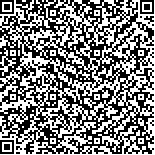| 颜 雪,商 娜,卫 星,等.2016—2020年内蒙古肿瘤登记地区肝癌流行特征及变化趋势预测:基于区域医疗数据[J].中国肿瘤,2024,33(3):214-222. |
| 2016—2020年内蒙古肿瘤登记地区肝癌流行特征及变化趋势预测:基于区域医疗数据 |
| Epidemiological Characteristics of Liver Cancer in Cancer Registration Areas of Inner Mongolia Autonomous Region from 2016 to 2020 and Trends Prediction: Based on Regional Medical Data |
| 投稿时间:2023-12-02 |
| DOI:10.11735/j.issn.1004-0242.2024.03.A008 |
|
 |
| 中文关键词: 肝癌 发病率 死亡率 变化趋势 预测 内蒙古 |
| 英文关键词:liver cancer incidence mortality trends prediction Inner Mongolia |
| 基金项目:中央引导地方科技发展资金项目(2020ZY0015);内蒙古自治区自然科学基金(2021MS08039) |
|
| 摘要点击次数: 2534 |
| 全文下载次数: 305 |
| 中文摘要: |
| 摘 要:[目的] 分析2016—2020年内蒙古肿瘤登记地区肝癌的流行特征及变化趋势,并对其后5年肝癌的发病率和死亡率进行预测。[方法] 提取2016—2020年内蒙古区域医疗卫生信息平台中15个肿瘤登记地区的原发性肝癌患者数据,按照性别和城乡分层,分别计算发病/死亡粗率、年龄别发病/死亡率、标化发病/死亡率。使用Joinpoint软件计算2016—2020年肝癌发病/死亡的平均年度变化百分比(AAPC)。使用GM(1,1)模型预测未来5年肝癌的发病率和死亡率。[结果] 2016—2020年内蒙古肿瘤登记地区肝癌粗发病率为37.97/10万,中标率为25.73/10万,世标率为26.00/10万;肝癌粗死亡率为31.52/10万,中标率为21.27/10万,世标率为21.58/10万。肝癌的发病率和死亡率在40岁前处于较低水平,随后呈上升趋势并于80~84岁组达发病和死亡高峰。2016—2020年,内蒙古肿瘤登记地区肝癌的中标发病率(AAPC=-10.49%,P=0.070)和中标死亡率(AAPC=-7.99%,P=0.002)均呈显著下降趋势,各年龄组肝癌的发病率和死亡率均呈下降趋势(P<0.05)。GM(1,1)模型预测结果显示,2021—2025年内蒙古肿瘤登记地区肝癌的发病率和死亡率均呈下降趋势,预计在2022年肝癌的死亡率将超过发病率。[结论] 2016—2020年内蒙古肿瘤登记地区肝癌的发病与死亡水平均呈下降趋势,但发病和死亡仍处于较高水平,且死亡率接近发病率。需加强肝癌的早期筛查及早诊早治工作,以降低肝癌的疾病负担。 |
| 英文摘要: |
| Abstract: [Purpose] To analyze the epidemiological characteristics of primary liver cancer in cancer registration areas of Inner Mongolia Autonomous Region from 2016 to 2020, and to predict the incidence and mortality of liver cancer in the next five years. [Methods] The primary liver cancer data from fifteen cancer registration areas from 2016 to 2020 in Inner Mongolia Regional Health Information Platform were collected.The crude incidence/mortality, age-specific incidence/mortality, and age-standardized incidence/mortality rate by Chinese standard population and Segi’s world standard population (ASIRC and ASIRW/ASMRC and ASMRW) were calculated stratified by gender and region.The average annual percentage change(AAPC) of incidence/mortality from 2016 to 2020 was calculated by the Joinpoint software. GM(1, 1) model was used to predict incidence rate and mortality rate of liver cancer over the next five years. [Results] From 2016 to 2020, the crude incidence rate of liver cancer in the cancer registration area of Inner Mongolia was 37.97/105, ASIRC and ASIRW were 25.73/105 and 26.00/105, respectively; the crude mortality rate, ASMRC and ASMRW were 31.52/105, 21.27/105, 21.58/105, respectively. The incidence and mortality of liver cancer were at a low level before the age of 40, then increased and reached the peak of incidence and death in the group between 80 to 84 years old. From 2016 to 2020, the ASIRC(AAPC=-10.49%, P=0.070) and ASMRC(AAPC=-7.99%, P=0.002) of liver cancer in the cancer registration area of Inner Mongolia were on a downward trend, and the same trend was observed in all age groups. The GM(1, 1) model predicted that the incidence rate and mortality rate of liver cancer would show a decreasing trend from 2021 to 2025, and it expected that the mortality rate of liver cancer would exceed the incidence rate in 2022. [Conclusion] The incidence and mortality of liver cancer in cancer registration areas of the Inner Mongolia Autonomous Region has decreased from 2016 to 2020, but incidence rate and mortality rate were still at a high level and the mortality rate would come close to the incidence rate. Early screening and early diagnosis and treatment of liver cancer need to be strengthened to reduce the disease burden. |
|
在线阅读
查看全文 查看/发表评论 下载PDF阅读器 |